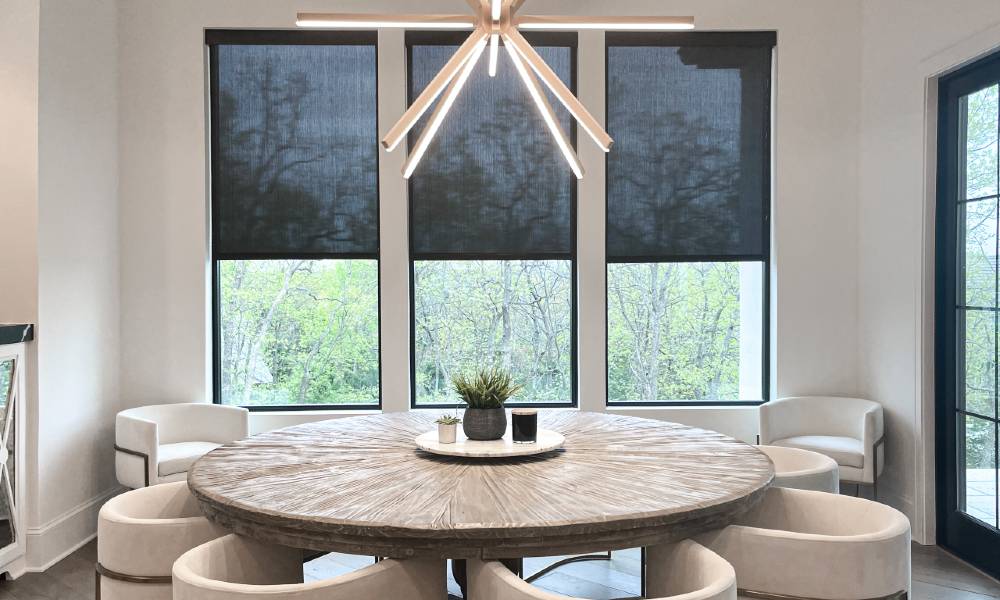Here are seven types of potential customers whose lifestyles are connecting with automated shades features and benefits.
We know that sales of home automation systems are growing every year. According to Parks Associates in their April 2023 study, 41% of U.S. internet households have a smart home device — a number that has stair-stepped up every year since it was about 14% in 2016. Automated shades play a significant role in this growth.
In fact, a study from the analyst firm Persistence Market Research entitled “Global Market Study On Automated Blinds and Shades” posits that the global market for automated blinds and shades is expected to reach $24.3 billion by 2033, growing at 4.5 CAGR from 2023 to 2033.
But who is buying these automated shades? And why are they buying them?
The initial thought might be that these are mostly people driven by a desire for convenience — people who want the ability to control their shades via their smart phone or tablet from wherever they happen to be in the home, be it their bed or kitchen or couch. Through the mobile app control that comes with some automated shades, users can employ cloud-based connectivity to control, adjust, and schedule their shades from any location.
If smart home dealers exclusively target these convenience cravers, however, they may be ignoring the many other benefits of automated shades, from security to energy savings to aesthetics, and are likely missing out on sales opportunities.
Here are seven types of customers that dealers can and should target when attempting to broaden the reach of their automated shades sales.
Customers with Mobility Issues
For some people, the convenience of automated shades control may be a necessity. For people who are elderly, disabled, or have chronic pain or illness, automated shades with motorized control options like smart phones, tablets, and voice control just may help contribute to their ability to live independently and age in place.
Customers Who Want to Reduce Their Footprint
Light-blocking and light-filtering automated shades not only bring lighting and temperature control to homeowners, but they can increase a home’s energy efficiency. By scheduling the shades to stay open more frequently in the winter, users can use less heat and switch off lights and lamps.
Homeowners can also automatically schedule their shades to close in the summer, naturally cooling the interior space. Because the automated shades can be programmed to be open or closed at certain times of the year or the day, users can optimize energy management, reduce monthly utility bills by up to 30%, and reduce their environmental footprint.
Work-from-Home (WFH) Clients
These days, more and more people are enjoying the convenience of working from home. With automated shades, these customers can create home offices that feature the ideal balance of natural and artificial light. Users can program their shades to close at certain times of day — depending on the season — to reduce glare, and then program them to open to allow views of sunshine and the natural world outside.
People with Children & Pets
First off, there’s the safety benefit of automated shades; these window treatments are cordless. Traditional manual shades with their dangling cords present a clear danger to children and pets. In fact, the U.S. Consumer Product Safety Commission calls corded window coverings one of the “top five hidden hazards” in our homes. Automated shades remove the cord — and the danger.
Security Seekers for Their Homes & Families
Not all homeowners think of automated shades when they think of increasing security in their homes – but they should. With automated shades, homeowners can schedule the shades to be down when they’re not home, through integration with any of a variety of smart hubs or home-control systems.
They can also be activated by smart thermostats, smoke alarms, and other devices that receive triggers when the house is empty. The shades can receive those triggers and automatically lower the shades so no one can see inside.
Smart shades can also be programmed to lower automatically when it gets dark outside, enhancing privacy and security. They can even be put into vacation mode, which will create random patterns of opening and closing, making it difficult for potential housebreakers to detect a routine.
Integrating smart shades with smart lighting and other home automation devices will further enhance the effectiveness of the homeowner’s security plan. If someone tries to enter the home forcefully, the window shade sensor will detect the activity, smart programming will turn on the lights, and a security camera will record all the activities while sending an alert to mobile devices.
Design-Minded Homeowners
Automated shades are not just about the technology and motorized innovation. With a clean, cord-free aesthetic and an ever-growing array of shade fabric offerings (PowerShades offers over 300 fabric options, for instance, and others in the market also present a wide variety), these products can fulfill every homeowner’s and designer’s interior design goals.
Plus, automated shades can be pre-set to block out damaging UV rays at certain times of day, preventing potential bleaching or damaging of furniture, rugs, and artwork.
Slow Risers from Their Golden Slumbers
Automated shades can be outfitted with sheer to semi-sheer to blackout shades, the latter delivering maximum privacy while blocking out light to allow for a great night sleep. Or even a rejuvenating afternoon nap. Plus, automated shades can be programmed to open in the morning exactly when the user wants them to open. This can be a great way to ease into wakefulness before the alarm goes off.
So who are the potential buyers of automated shades, those who are driving the growth of the business? These seven categories are a great place to start, but they’re just a starting point. The number of people who can benefit from automated shades is growing larger every day.
This article originally appears on CePro.com
